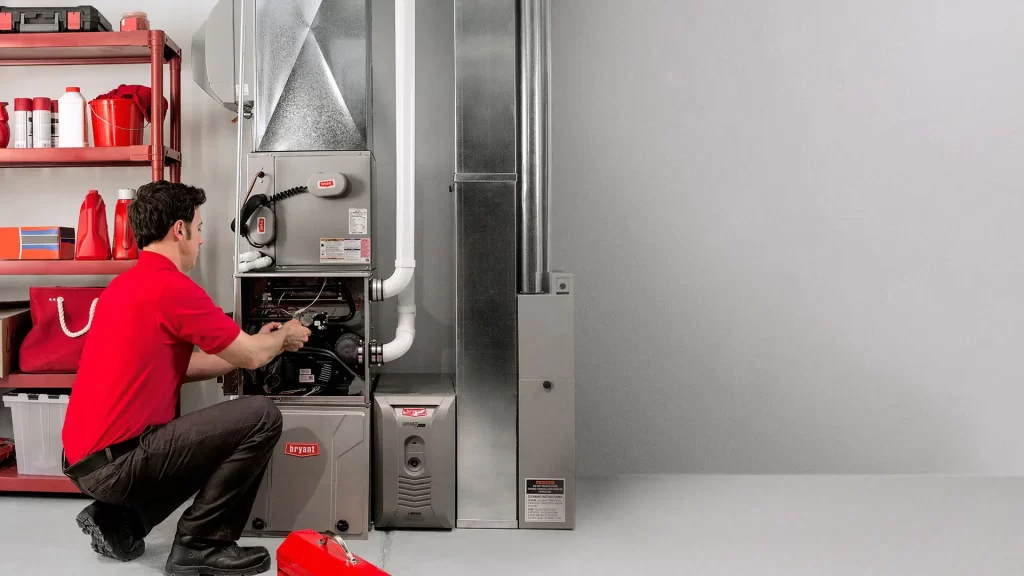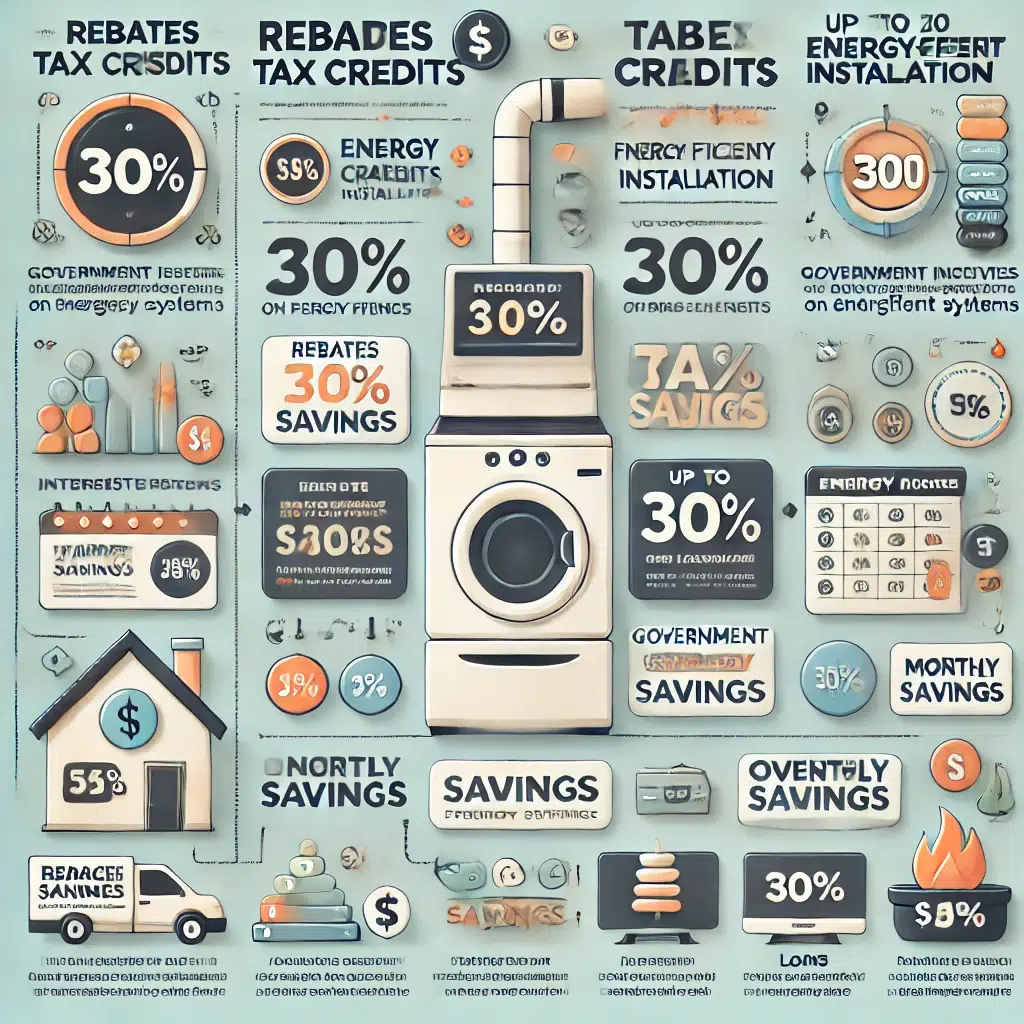Why Furnace Installation Cost Are So High: A Complete Break Down
1. Cost of the Furnace Unit Itself 2. Labor Costs for Installation 3. Additional Materials and Equipment 4. Efficiency and Long-Term Cost Savings 5. The Role of Supply Chain and Inflation 6. Financing Options and Payment Plans 7. How to Save on Furnace Installation Conclusion Furnace installation can be a significant investment for homeowners due…
1. Cost of the Furnace Unit Itself
- Different Furnace Types (Gas, Electric, Oil)
- Energy Efficiency (AFUE Rating and Long-Term Savings)
- Brand and Model Considerations
- Explain how higher AFUE-rated units or premium brands increase costs upfront but save money in the long run.
- The cost range for various furnace types.
2. Labor Costs for Installation
- Complexity of Installation
- Geographic Location’s Influence on Pricing
- Licensed vs. Unlicensed Installers (The Cost of Expertise)
- Discuss how labor costs vary significantly based on the home’s layout or if ductwork needs replacement.
- Why you should opt for licensed professionals even though they charge more.
- Don’t hesitate to negotiate with HVAC companies. Ask if they can reduce the labor costs or include additional services at no extra charge.

3. Additional Materials and Equipment
- Ductwork, Thermostats, and Venting Systems
- Permit Fees and Code Compliance
- Safety Measures and Warranties
- Explain how these necessary components can add hidden costs to the installation.
- The importance of compliance with local regulations.
4. Efficiency and Long-Term Cost Savings
- Energy Bills vs. Initial Investment
- Environmental Impact of Energy-Efficient Systems
- Emphasize that though the upfront cost is higher, an energy-efficient furnace will save money on energy bills in the long run.
- The environmental benefits of a more efficient system.
5. The Role of Supply Chain and Inflation
- Impact of Material Shortages and Inflation
- Global Supply Chain Disruptions and Price Hikes
- Discuss the effects of recent global events on material and labor costs.
- The fluctuating prices of raw materials like metals used in furnace construction.
6. Financing Options and Payment Plans
- Financing Options (Loans, Leases)
- Tax Credits and Rebates for Energy-Efficient Furnaces
- Many homeowners can reduce upfront costs by exploring financing or looking into government rebates.
- Look into payment plans, financing, or leasing options that spread the cost over time, helping you manage large upfront expenses.

7. How to Save on Furnace Installation
- Off-Season Installation Discounts
- Comparison Shopping and Getting Multiple Quotes
- Routine Maintenance to Avoid Premature Replacement
- Tips for homeowners on how to reduce furnace installation costs without sacrificing quality.
- Importance of preventive maintenance.
- Schedule your furnace installation in late spring or summer when demand for HVAC services is lower. Many contractors offer discounts during this time.
- Maintain your current furnace to delay replacement. Regular tune-ups and repairs can extend the life of your current system, helping you save in the long run.
- Watch for seasonal promotions or discounts offered directly by furnace manufacturers or retailers.
Conclusion
Furnace installation can be a significant investment for homeowners due to a variety of factors:
- Furnace Unit Cost: The price of the furnace itself varies based on the type (gas, electric, or oil), energy efficiency (AFUE rating), and brand. High-efficiency models cost more but provide long-term savings on energy bills.
- Labor Costs: Installation fees depend on the complexity of the job and geographic location. Experienced and licensed technicians are essential, though they come with higher labor costs.
- Additional Materials and Equipment: Beyond the furnace, extra costs for ductwork, thermostats, and venting systems may apply, along with permits and code compliance fees.
- Supply Chain and Inflation: Recent supply chain disruptions and rising costs of raw materials have increased prices for furnaces and installation services.
- Long-Term Savings: Although the upfront cost is high, energy-efficient systems offer long-term savings through reduced energy consumption and government rebates or tax credits.
- Emphasize that though the upfront cost is higher, an energy-efficient furnace will save money on energy bills in the long run.
- By understanding these factors, homeowners can better prepare for the overall expense of furnace installation while maximizing long-term benefits.

